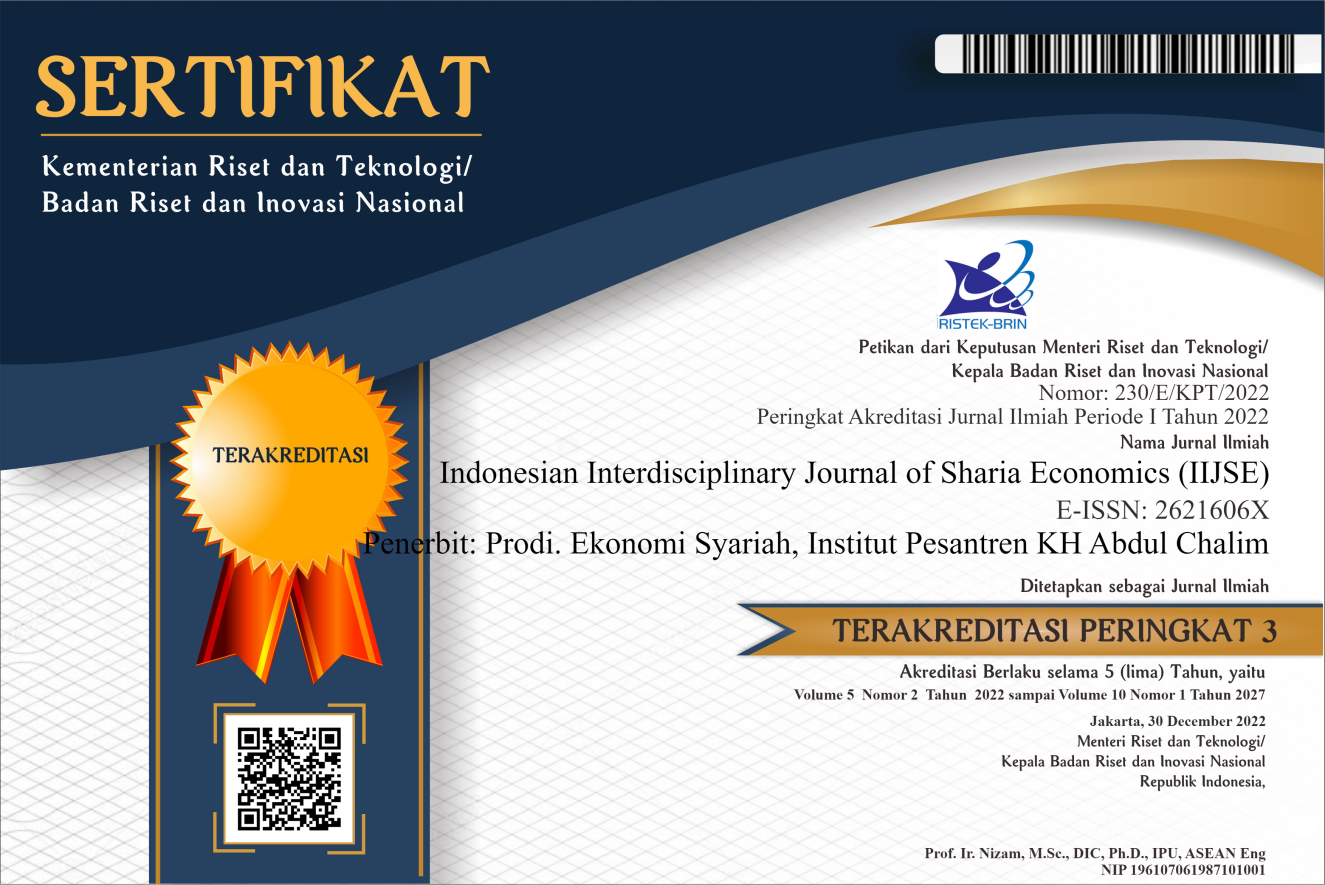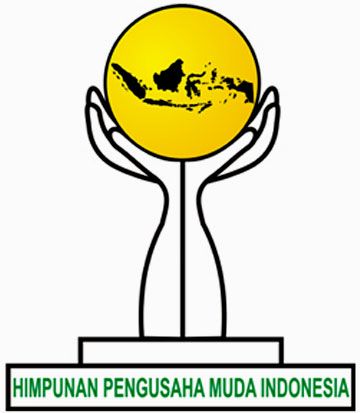Analysis of the Influence of Product Design and Perceived Quality on Customer Loyalty Among Hybrid Car Users: The Mediating Role of Customer Satisfaction and Moderating Role of Perceived Value
Abstract
The rise of global decarbonization has significantly transformed the automotive industry, with increasing demand for environmentally friendly vehicles. This study aims to analyze the influence of product design and perceived quality on customer loyalty among hybrid car users in DKI Jakarta, with customer satisfaction as a mediating variable and perceived value as a moderating variable. Integrating Expectancy-Value Theory as its theoretical foundation, this study employs a quantitative approach through an explanatory research design. Data were collected from 200 hybrid car users in DKI Jakarta and analysed using Partial Least Squares Structural Equation Modelling (PLS-SEM). The findings reveal that product design and perceived quality positively influence customer loyalty both directly and indirectly through customer satisfaction. Furthermore, perceived value strengthens the relationship between product design, perceived quality, customer satisfaction, and customer loyalty. This research provides theoretical and practical insights for automotive manufacturers to develop effective differentiation and customer retention strategies in an increasingly competitive market by emphasizing attractive product design, high-quality perceptions, and value propositions that enhance customer satisfaction and loyalty.
Downloads
References
Adnan, N., Nordin, S. M., Amini, M. H., & Langove, N. (2021). What make consumers sign
up to PHEVs? Predicting Malaysian consumer behavior in adoption of PHEVs. Transportation Research Part A: Policy and Practice, 147, 261-283. https://doi.org/10.1016/j.tra.2021.03.019
Algesheimer, R., Dholakia, U. M., & Herrmann, A. (2005). The social influence of brand
community: Evidence from European car clubs. Journal of Marketing, 69(3), 19-34.
https://doi.org/10.1509/jmkg.69.3.19.66363
Assaker, G., Hallak, R., & O'Connor, P. (2020). Examining heterogeneity through responsebased unit segmentation in PLS-SEM: A study of human capital and firm performance in upscale restaurants. Current Issues in Tourism, 23(2), 137-152. https://doi.org/10.1080/13683500.2018.1511693
Becker, J. M., Ringle, C. M., Sarstedt, M., & Völckner, F. (2018). How to deal with
endogeneity in partial least squares structural equation modeling. Journal of the Academy of Marketing Science, 46(1), 1-24. https://doi.org/10.1007/s11747-017-0547-4
Biresselioglu, M. E., Demirbag Kaplan, M., & Yilmaz, B. K. (2022). Electric vehicle
purchasing intentions: The role of product knowledge, product involvement, environmental concern, and perceived value. Transportation Research Part D: Transport and Environment, 112, 103464. https://doi.org/10.1016/j.trd.2022.103464
Bloch, P. H. (2011). Product design and consumer response. Journal of Marketing, 59(3), 16–29. https://doi.org/10.2307/1252111
Boztepe, S. (2007). User value: Competing theories and models. International Journal of
Design, 1(2), 55-63.
Calder, B. J., Phillips, L. W., & Tybout, A. M. (1981). Designing research for application.
Journal of Consumer Research, 8(2), 197-207. https://doi.org/10.1086/208856
Chen, Y., Wei, X., Zhang, J., & Cui, Y. (2021). Does brand perception matter for consumers
when purchasing smart connected electric vehicles? The moderating effect of consumption values. Sustainability, 13(5), 2893. https://doi.org/10.3390/su13052893
Chen, S., Zhang, J., Sun, Q., & Tang, Y. (2022). Effect of design perception on sustainable
consumption behavior: The moderating role of materialism. Sustainable Production and Consumption, 30, 561-571. https://doi.org/10.1016/j.spc.2021.12.025
Chen, H., Yada, S., & Zeng, M. (2023). Perceived quality and customer loyalty in hybrid
vehicles: A cross-cultural examination. Journal of Cleaner Production, 385, 135735. https://doi.org/10.1016/j.jclepro.2023.135735
Chikazhe, L., Chikazhe, T., & Chuma, R. (2021). The role of perceived service quality and
corporate image in building customer loyalty: Evidence from the banking sector. Journal of Retailing and Consumer Services, 61, 102581. https://doi.org/10.1016/j.jretconser.2021.102581
Chin, W. W., Cheah, J. H., Liu, Y., Ting, H., Lim, X. J., & Cham, T. H. (2020). Demystifying
the role of causal-predictive modeling using partial least squares structural equation modeling in information systems research. Industrial Management & Data Systems, 120(12), 2161- 2209. https://doi.org/10.1108/IMDS-10-2019-0529
Chinomona, R. (2016). Brand communication, brand image and brand trust as antecedents of brand loyalty in Gauteng Province of South Africa. African Journal of Economic and
Management Studies, 7(1), 124-139. https://doi.org/10.1108/AJEMS-03-2013-0031
Churchill, G. A. (1979). A paradigm for developing better measures of marketing constructs.
Journal of Marketing Research, 16(1), 64-73. https://doi.org/10.2307/3150876
Cohen, J. (1992). A power primer. Psychological Bulletin, 112(1), 155-159.
https://doi.org/10.1037/0033-2909.112.1.155
Cuong, D. T., & Khoi, B. H. (2019). The relationship between service quality, satisfaction,
Trust and customer loyalty: A study of convenience stores in Vietnam. Journal of Advanced Research in Dynamic and Control Systems, 11(10), 327-333.
Dam, S. M., & Dam, T. C. (2021). Relationships between service quality, brand image,
customer satisfaction, and customer loyalty. Journal of Asian Finance, Economics and
Business, 8(3), 585-593. https://doi.org/10.13106/JAFEB.2021.VOL8.NO3.0585
Davis, F., & Johnson, M. (2022). Longitudinal analysis of perceived value and consumer
loyalty in the automotive industry. Journal of Business Research, 145, 45–58.
https://doi.org/10.1016/j.jbusres.2022.01.001
Dijkstra, T. K., & Henseler, J. (2015). Consistent partial least squares path modeling. MIS
Quarterly, 39(2), 297-316. https://doi.org/10.25300/MISQ/2015/39.2.02
El-Adly, M. I. (2019). Modelling the relationship between hotel perceived value, customer
satisfaction, and customer loyalty: A multidimensional approach. International Journal of Contemporary Hospitality Management, 31(3), 974–996. https://doi.org/10.1108/IJCHM-09-2017-0707
Etikan, I., Musa, S. A., & Alkassim, R. S. (2016). Comparison of convenience sampling and
purposive sampling. American Journal of Theoretical and Applied Statistics, 5(1), 1-4. https://doi.org/10.11648/j.ajtas.20160501.11
Falk, C. F., & Biesanz, J. C. (2016). Two cross-platform programs for inferences and interval estimation about indirect effects in mediational models. SAGE Open, 6(1),2158244015625445. https://doi.org/10.1177/2158244015625445
Feng, L., Zhang, X., & Li, Y. (2024). The impact of product design on customer loyalty in the electric vehicle market: A moderated mediation model. Sustainability, 16(5), 2456. https://doi.org/10.3390/su16052456
Feng, X., Wang, L., & Cao, S. (2024). Customer loyalty in eco-friendly vehicles: The interplay of design, perceived value, and satisfaction. International Journal of Sustainable Transportation, 28(1), 90-104. https://doi.org/10.1080/15568318.2023.2243991
Fornell, C., & Larcker, D. F. (1981). Evaluating structural equation models with unobservable variables and meansurement error. Journal of Marketing Research, 18(1), 39-50. https://doi.org/10.2307/3151312
GAIKINDO (Gabungan Industri Kendaraan Bermotor Indonesia). (2023). Laporan penjualan
kendaraan ramah lingkungan di Indonesia tahun 2023.
Ghozali, I. (2021). Aplikasi analisis multivariate dengan program IBM SPSS 25 (Edisi 10).
Badan Penerbit Universitas Diponegoro.
Hafidz, J., & Huriyahnuryi, M. (2023). Building customer loyalty in environmentally friendly
products: The mediating role of satisfaction and perceived value. Sustainability, 15(4), 3407. https://doi.org/10.3390/su15043407
Hair, J. F., Black, W. C., Babin, B. J., & Anderson, R. E. (2019). Multivariate data analysis
(8th ed.). Cengage Learning.
Hair, J. F., Hult, G. T. M., Ringle, C. M., Sarstedt, M., Danks, N. P., & Ray, S. (2022). Partial
least squares structural equation modeling (PLS-SEM) using R: A workbook. Springer. https://doi.org/10.1007/978-3-031-10153-8
Hanaysha, J. R. (2018). Customer retention and the mediating role of perceived value in retail
industry. World Journal of Entrepreneurship, Management and Sustainable Development, 14(1), 2-24. https://doi.org/10.1108/WJEMSD-06-2017-0035
Hao, Y., Dong, L., Ma, C., Zhang, X., Liang, H., & Qiao, Y. (2022). Product design for
sustainable consumer products: A review and future research agenda. Journal of Cleaner Production, 346, 131230. https://doi.org/10.1016/j.jclepro.2022.131230
Haynes, S. N., Richard, D., & Kubany, E. S. (1995). Content validity in psychological
assessment: A functional approach to concepts and methods. Psychological Assessment, 7(3), 238-247. https://doi.org/10.1037/1040-3590.7.3.238
Henseler, J., Ringle, C. M., & Sarstedt, M. (2015). A new criterion for assessing discriminant
validity in variance-based structural equation modeling. Journal of the Academy of Marketing Science, 43(1), 115-135. https://doi.org/10.1007/s11747-014-0403-8
Henseler, J. (2021). Composite-based structural equation modeling: Analyzing latent and
emergent variables. Guilford Press.
Higueras-Castillo, E., Liébana-Cabanillas, F. J., Muñoz-Leiva, F., & Molinillo, S. (2019). The role of collectivism in the formation of continuous usage intention of electronic vehicles: A cross-cultural analysis. Journal of Cleaner Production, 240, 118216.
https://doi.org/10.1016/j.jclepro.2019.118216
Homburg, C., Schwemmle, M., & Kuehnl, C. (2015). New product design: Concept,
meansurement, and consequences. Journal of Marketing, 79(3), 41–56. https://doi.org/10.1509/jm.14.0199
Hu, Y., Wang, Y., & Yang, Z. (2023). User-oriented product design in smart connected
products: A systematic review and future research directions. Engineering Design, 34(2), 219-243. https://doi.org/10.1080/09544828.2022.2163857
Hussein, A. S., Hapsari, R., & Yulianti, I. (2018). Experience quality and hotel boutique
customer loyalty: Mediating role of hotel image and perceived value. Journal of Quality Assurance in Hospitality & Tourism, 19(4), 442-459. https://doi.org/10.1080/1528008X.2018.1429981
International Energy Agency. (2023). Global EV outlook 2023. IEA Publications.
IQR Group. (2023). Indonesian automotive consumer behavior insights. IQR Market Research.
Izogo, E. E., & Ogba, I. E. (2020). Understanding the antecedents of word-of-mouth behavior
in the automobile repair services sector: An emerging market perspective. Journal of Service Theory and Practice, 30(3), 311-336. https://doi.org/10.1108/JSTP-05-2019-0117
Javed, A., & Tuckova, Z. (2020). The role of customer's perceived value in sustainable
consumption of online transportation services. Sustainability, 12(21), 8193.
https://doi.org/10.3390/su12218193
Jin, J., Tang, D., & Zhang, Y. (2018). Creating a culture of "green": Regulatory legitimation in new energy vehicle field. Journal of Cleaner Production, 187, 152-162.
https://doi.org/10.1016/j.jclepro.2018.03.205
Kalia, P., Kaur, N., & Singh, T. (2021). Consumer satisfaction and loyalty in mobile commerce: Role of perceived ease of use, perceived usefulness, and perceived enjoyment. Journal of International Consumer Marketing, 33(5), 547-565.
https://doi.org/10.1080/08961530.2021.1918134
Kementerian Perindustrian. (2023). Laporan perkembangan industri kendaraan ramah
lingkungan di Indonesia. Kemenperin.
Khan, I., & Rahman, Z. (2015). Brand experience anatomy in retailing: An interpretive
structural modeling approach. Journal of Retailing and Consumer Services, 24, 60-69.
https://doi.org/10.1016/j.jretconser.2015.02.003
Khormali, M., Bakhtiarzadeh, S., & Amini, A. (2022). Perceived quality and brand loyalty: A case study in hybrid vehicles. Journal of Business Research, 149, 315-328.
https://doi.org/10.1016/j.jbusres.2022.05.053
Kim, H., Choi, Y. J., & Lee, Y. (2020). Investigating consumer evaluations in augmented
reality: The role of self-congruity and anthropomorphism. Telematics and Informatics, 54, 101465. https://doi.org/10.1016/j.tele.2020.101465
Kim, J., Kim, J., & Wang, Y. (2022). Customer experience with electric vehicles and its effect on satisfaction and loyalty. Journal of Cleaner Production, 335, 130316.
https://doi.org/10.1016/j.jclepro.2022.130316
Korlantas Polri. (2023). Statistik kendaraan bermotor terdaftar. Korps Lalu Lintas Kepolisian Republik Indonesia.
Kotler, P., & Keller, K. L. (2013). Marketing management (14th ed.). Pearson.
Kumar, A., & Ghodeswar, B. M. (2015). Factors affecting consumers' green product purchase decisions. Marketing Intelligence & Planning, 33(3), 330-347. https://doi.org/10.1108/MIP-03-2014-0068
Kumar, A., & Reinartz, W. (2016). Creating enduring customer value. Journal of Marketing,
(6), 36-68. https://doi.org/10.1509/jm.15.0414
Kumar, V., Zhang, K., & Yang, H. (2020). Understanding the role of visual aesthetics in
influencing consumers' evaluation of products. Journal of Product Innovation Management, 37(6), 542-562. https://doi.org/10.1111/jpim.12545
Kumar, S., Ansari, Z. A., & Jayasimha, K. R. (2022). The role of perceived value in consumer
loyalty toward green products. Journal of Global Marketing, 35(1), 65-82. https://doi.org/10.1080/08911762.2021.1967870
Kusumawati, A., & Rahayu, K. S. (2020). The effect of experience quality on customer
perceived value and customer satisfaction and its impact on customer loyalty. The TQM
Journal, 32(6), 1525-1540. https://doi.org/10.1108/TQM-05-2019-0150
Leder, H., Belke, B., Oeberst, A., & Augustin, D. (2004). A model of aesthetic appreciation
and aesthetic judgments. British Journal of Psychology, 95(4), 489-508.
https://doi.org/10.1348/0007126042369811
Lee, Y. K., Kim, S. Y., Chung, N., Ahn, K., & Lee, J. W. (2019). When social media met
Commerce: A model of perceived customer value in group-buying. Journal of Services
Marketing, 33(4), 398-410. https://doi.org/10.1108/JSM-12-2014-0400
Lee, J. Y., Halvorsen, B., Zhu, L., & Gao, Z. (2021). Consumer valuation of driving range: A meta-analysis. Transportation Research Part D: Transport and Environment, 93, 102743. https://doi.org/10.1016/j.trd.2021.102743
Leedy, P. D., & Ormrod, J. E. (2019). Practical research: Planning and design (12th ed.).
Pearson.
Liu, Y., Zhang, W., & Chen, X. (2022). Perceived quality dimensions in the automotive
industry: Reliability, performance, and durability insights. International Journal of Automotive Technology and Management, 22(1), 34–52.
Liu, Z., Hao, H., Cheng, X., & Zhao, F. (2022). Critical factors influencing the adoption of
electric vehicles in China. Resources, Conservation and Recycling, 181, 106281.
https://doi.org/10.1016/j.resconrec.2022.106281
Liu, S., Zhang, W., & Li, P. (2023). How perceived quality influences customer loyalty in
electric vehicles: A moderated mediation model. Journal of Cleaner Production, 386, 135818. https://doi.org/10.1016/j.jclepro.2023.135818
Loureiro, S. M. C., Sardinha, I. M. D., & Reijnders, L. (2012). The effect of corporate social
responsibility on consumer satisfaction and perceived value: The case of the automobile industry sector in Portugal. Journal of Cleaner Production, 37, 172-178. https://doi.org/10.1016/j.jclepro.2012.07.003
Luchs, M., & Swan, K. S. (2011). Perspective: The emergence of product design as a field of marketing inquiry. Journal of Product Innovation Management, 28(3), 327-345.
https://doi.org/10.1111/j.1540-5885.2011.00801.x
MacKenzie, S. B., & Podsakoff, P. M. (2012). Common method bias in marketing: Causes,
mechanisms, and procedural remedies. Journal of Retailing, 88(4), 542-555.
https://doi.org/10.1016/j.jretai.2012.08.001
Malhotra, N. K., Nunan, D., & Birks, D. F. (2022). Marketing research: An applied approach
(6th ed.). Pearson.
Marshal, G. W., & Johnston, M. W. (2015). Marketing management (2nd ed.). McGraw-Hill.
Martosaputro, S., & Murti, N. (2021). Factors affecting consumer adoption of environmentally friendly vehicles in Indonesia. Journal of Cleaner Production, 319, 128668. https://doi.org/10.1016/j.jclepro.2021.128668
Minta, Y. (2018). Link between satisfaction and customer loyalty in the insurance industry:
Moderating effect of trust and commitment. Journal of Marketing Management, 6(2), 25-33. https://doi.org/10.15640/jmm.v6n2a3
Mishra, P. (2016). The role of product innovation in competitive markets: A study on global
automotive industry trends.
Moon, J.-W., Kim, S.-H., & Lee, J.-Y. (2015). Shifting consumer preferences from price to
design in the automotive industry: A longitudinal study. Journal of Consumer Behavior, 14(4),245–256.
Moon, H., Han, S. H., & Chun, J. (2021). The influence of design attributes of eco-friendly
products on consumers' perceived quality and environmental value. International Journal of Design, 15(1), 23-34.
Morgan, P., & Rahman, F. (2021). The influence of perceived quality on customer satisfaction and customer loyalty in the emerging markets: A mediation analysis. Sustainability, 13(14), 7735. https://doi.org/10.3390/su13147735
Nguyen, T.-T., & Park, J.-H. (2023). Perceived quality and its impact on brand trust and
repurchase intention in the automotive sector: Evidence from emerging markets. Journal of Consumer Marketing, 40(1), 23–37.
Nguyen, Q. H., & Park, S. T. (2023). A study on the effects of perceived quality on brand trust and repurchase intention of hybrid cars: The moderating role of brand awareness.
Sustainability, 15(1), 531. https://doi.org/10.3390/su15010531
Nian, X., Qiu, S., & Chang, K. (2021). Exploring structural relationships between hybrid
vehicle perceived quality dimensions and consumer satisfaction. Journal of Cleaner Production, 323, 129145. https://doi.org/10.1016/j.jclepro.2021.129145
Nitzl, C., Roldan, J. L., & Cepeda, G. (2016). Mediation analysis in partial least squares path
modeling: Helping researchers discuss more sophisticated models. Industrial Management & Data Systems, 116(9), 1849-1864. https://doi.org/10.1108/IMDS-07-2015-0302
Nunnally, J. C., & Bernstein, I. H. (1994). Psychometric Theory (3rd ed.). McGraw-Hill.
Oliver, R. L. (1999). Whence consumer loyalty? Journal of Marketing, 63(4), 33-44.
https://doi.org/10.2307/1252099
Oliver, R. L. (2010). Satisfaction: A behavioral perspective on the consumer (2nd ed.). M.E.
Sharpe.
Oliveira, T., & Santos, C. (2023). The multidimensional nature of perceived value in alternative fuel vehicles: A comprehensive framework. Transportation Research Part D: Transport and Environment, 115, 103566. https://doi.org/10.1016/j.trd.2023.103566
Özkan, P., Süer, S., Keser, İ. K., & Kocakoç, İ. D. (2019). The effect of service quality and
customer satisfaction on customer loyalty: The mediation of perceived value of services,
corporate image, and corporate reputation. International Journal of Bank Marketing, 38(2), 384-405. https://doi.org/10.1108/IJBM-03-2019-0096
Pan, Y., Zhang, X., & Gao, Y. (2021). The relationship between perceived quality, customer
satisfaction, and customer loyalty: A meta-analysis. Sustainability, 13(11), 6277. https://doi.org/10.3390/su13116277
Pan, L., Huang, M., & Wu, T. (2020). A meta-analysis of the relationship between product
quality and customer loyalty in emerging economies. Journal of Business Research, 118, 78-88. https://doi.org/10.1016/j.jbusres.2020.06.034
Pappas, I. O., Kourouthanassis, P. E., Giannakos, M. N., & Chrissikopoulos, V. (2016).
Explaining online shopping behavior with fsQCA: The role of cognitive and affective
perceptions. Journal of Business Research, 69(2), 794-803. https://doi.org/10.1016/j.jbusres.2015.07.010
Park, S., & Kim, H. (2023). Linking product design and customer loyalty in sustainable
mobility: The role of emotional attachment. Journal of Business Research, 155, 113345.
https://doi.org/10.1016/j.jbusres.2022.113345
Patrick, V. M., & Hagtvedt, H. (2011). Aesthetic incongruity resolution. Journal of Marketing Research, 48(2), 393-402. https://doi.org/10.1509/jmkr.48.2.393
Peng, L., Chen, Y., & Kong, X. (2022). Customer loyalty in green vehicles: Insights from
China's market. Transport Policy, 123, 270-283. https://doi.org/10.1016/j.tranpol.2022.04.023
Petschnig, M., Heidenreich, S., & Spieth, P. (2014). Innovative alternatives take action --
Investigating determinants of alternative fuel vehicle adoption. Transportation Research Part A: Policy and Practice, 61, 68-83. https://doi.org/10.1016/j.tra.2014.01.001
Pinto, M. E., Barhorst, J. B., & McLean, G. (2019). The impact of consumer-brand engagement on brand loyalty: The mediating role of consumer value co-creation behavior within online brand communities. Journal of Business Research, 109, 64-75.
https://doi.org/10.1016/j.jbusres.2019.11.050
Podsakoff, P. M., MacKenzie, S. B., & Podsakoff, N. P. (2012). Sources of method bias in
social science research and recommendations on how to control it. Annual Review of Psychology, 63, 539-569. https://doi.org/10.1146/annurev-psych-120710-100452
Rahman, S. A., Taghizadeh, S. K., Ramayah, T., & Ahmad, N. H. (2019). Service innovation
management practices and pricing practices for performance in Malaysian telecom. Asian Academy of Management Journal, 24(1), 129-150. https://doi.org/10.21315/aamj2019.24.1.6
Rahman, S., Saleem, Y., & Akhtar, S. (2022). Validating a customer orientation scale in the
automobile industry: Implications for customer relationship management. Journal of Marketing Management, 38(1-2), 79-111. https://doi.org/10.1080/0267257X.2021.1960825
Rahman, H., Liu, Z., & Fisher, R. (2021). The influence of perceived quality on brand loyalty:
A mediated moderation model. Journal of Retailing and Consumer Services, 63, 102679. https://doi.org/10.1016/j.jretconser.2021.102679
Razzaq, Z., Razzaq, A., Yousaf, S., & Hong, Z. (2019). The impact of utilitarian and hedonistic shopping values on sustainable fashion consumption: The moderating role of religiosity. Global Business Review, 20(5), 1244-1261. https://doi.org/10.1177/0972150919845549
Richter, N. F., Sinkovics, R. R., Ringle, C. M., & Schlägel, C. (2016). A critical look at the use of SEM in international business research. International Marketing Review, 33(3), 376-404. https://doi.org/10.1108/IMR-04-2014-0148
Ringle, C. M., Wende, S., & Becker, J. M. (2015). SmartPLS 3. SmartPLS GmbH.
Rivera, J., & Chang, K. (2022). Emotional bonding to hybrid vehicles: The interplay of design and quality perceptions. Journal of Environmental Psychology, 79, 101728.
https://doi.org/10.1016/j.jenvp.2021.101728
Riyadi, S. (2021). The influence of product quality on brand loyalty in the Indonesian
automotive industry. International Journal of Quality & Reliability Management, 38(9), 2055- 2073. https://doi.org/10.1108/IJQRM-09-2020-0315
Ruan, Y., Hang, C. C., & Wang, Y. M. (2020). Government's role in disruptive innovation and industry emergence: The case of the electric bike in China. Technovation, 94-95, 102128. https://doi.org/10.1016/j.technovation.2020.102128
Ruiz-Mafe, C., Chatzipanagiotou, K., & Curras-Perez, R. (2018). The role of emotions and
conflicting online reviews on consumers' purchase intentions. Journal of Business Research, 89, 336-344. https://doi.org/10.1016/j.jbusres.2018.01.027
Sabir, R. I. (2020). Understanding customer experience dimensions: A case of mobile phones. Asian Academy of Management Journal, 25(1), 199-218.
https://doi.org/10.21315/aamj2020.25.1.10
Sarstedt, M., Hair, J. F., & Ringle, C. M. (2022). PLS-SEM: Indeed a silver bullet--
retrospective observations and recent advances. Journal of Marketing Theory and Practice, 30(4), 524-546. https://doi.org/10.1080/10696679.2022.2031840
Sattler, T., Dawes, C. T., & Popkin, S. J. (2023). Best practice for pretest procedures in survey
research. Political Analysis, 31(3), 429-438. https://doi.org/10.1017/pan.2022.33
Saunders, M., & Thornhill, A. (2019). Research methods for business students (8th ed.).
Pearson.
Sekaran, U., & Bougie, R. (2016). Research methods for business: A skill building approach
(7th ed.). John Wiley & Sons.
Shmueli, G., Sarstedt, M., Hair, J. F., Cheah, J. H., Ting, H., Vaithilingam, S., & Ringle, C. M. (2019). Predictive model assessment in PLS-SEM: Guidelines for using PLSpredict. European Journal of Marketing, 53(11), 2322-2347. https://doi.org/10.1108/EJM-02-2019-0189
Slack, N., Singh, G., & Sharma, S. (2020). Impact of perceived value on the satisfaction of
supermarket customers: Developing country perspective. International Journal of Retail & Distribution Management, 48(11), 1235-1254. https://doi.org/10.1108/IJRDM-03-2019-0099
Solikin, M., Widodo, E., & Santoso, I. (2022). The role of environmental considerations in
electric vehicle adoption in Indonesia. Sustainability, 14(4), 2043. https://doi.org/10.3390/su14042043
Srinivasan, R., Lilien, G. L., & Rangaswamy, A. (2012). Technological opportunism and
radical technology adoption: An application to e-business. Journal of Marketing, 76(3), 18-33. https://doi.org/10.1509/jm.10.0157
Streukens, S., & Leroi-Werelds, S. (2016). Bootstrapping and PLS-SEM: A step-by-step guide to get more out of your bootstrap results. European Management Journal, 34(6), 618-632. https://doi.org/10.1016/j.emj.2016.06.003
Suttikun, C., & Meeprom, S. (2021). The influence of service quality perception on behavioral intentions: The role of perceived value and e-WOM. Cogent Business & Management, 8(1), 1953679. https://doi.org/10.1080/23311975.2021.1953679
Sweeney, J. C., & Soutar, G. N. (2001). Consumer perceived value: The development of a
multiple item scale. Journal of Retailing, 77(2), 203-220. https://doi.org/10.1016/S0022- 4359(01)00041-0
Syah, R., & Olivia, M. (2022). Green product adoption: The role of perceived value in
Indonesian automotive market. Sustainable Production and Consumption, 30, 329-340.
https://doi.org/10.1016/j.spc.2021.12.011
Taylor, S., & Brown, D. (2021). Environmental value perception and consumer behavior in
sustainable transportation. Transportation Research Part F: Traffic Psychology and
Behaviour, 76, 205-224. https://doi.org/10.1016/j.trf.2020.11.009
Tian, J., Yu, L., & Yang, S. (2022). Consumer adoption of green vehicles: A longitudinal study of the energy consumption patterns. Energy Policy, 165, 112957.
https://doi.org/10.1016/j.enpol.2022.112957
Vimla, P., & Taneja, A. (2021). Quality perception and brand loyalty in healthcare services:
The mediating role of patient satisfaction. Journal of Health Management, 23(2), 220-237. https://doi.org/10.1177/0972063421995046
Voorhees, C. M., Brady, M. K., Calantone, R., & Ramirez, E. (2016). Discriminant validity
testing in marketing: An analysis, causes for concern, and proposed remedies. Journal of the Academy of Marketing Science, 44(1), 119-134. https://doi.org/10.1007/s11747-015-0455-4
Wahyuningsih, E., & Sukaatmadja, I. P. G. (2020). Effect of product quality, price perception
and brand image on satisfaction and customer loyalty. International Research Journal of Management, IT and Social Sciences, 7(5), 149-159. https://doi.org/10.21744/irjmis.v7n5.988
Wang, Y., & Hazen, B. T. (2016). Consumer product knowledge and intention to purchase
remanufactured products. International Journal of Production Economics, 181, 460-469. https://doi.org/10.1016/j.ijpe.2015.08.031
Wang, S., Wang, J., Li, J., & Zhou, K. (2020). The dual path from value perception to customer loyalty: An empirical study of hybrid vehicle owners in China. Journal of Cleaner Production, 273, 123085. https://doi.org/10.1016/j.jclepro.2020.123085
Wang, L., Gao, H., & Zhu, J. (2022). Aesthetics and functionality: Two pillars of automotive
product design in sustainable markets. Design Studies, 78, 101062.
https://doi.org/10.1016/j.destud.2021.101062
Wang, S., Gao, Y., & Liu, J. (2023). Green vehicle loyalty and its determinants among Chinese consumers. Transportation Research Part D: Transport and Environment, 114, 103544. https://doi.org/10.1016/j.trd.2022.103544
Watson, G. F., Beck, J. T., Henderson, C. M., & Palmatier, R. W. (2022). Customer loyalty
and satisfaction in the automotive industry: A meta-analysis. Journal of Service Research, 25(2), 245-262. https://doi.org/10.1177/10946705211048061
Woo, E., & Kim, Y. G. (2021). Customer loyalty in sustainable transportation: Price premium, purchasing pattern, and green vehicle adoption intention. Journal of Cleaner Production, 326, 129394. https://doi.org/10.1016/j.jclepro.2021.129394
Wong, V., Turner, W., & Stoneman, P. (2020). Marketing strategies for hybrid cars: The role
of price premiums, product characteristics and brand identity. Technology Analysis & Strategic Management, 32(9), 1022-1037. https://doi.org/10.1080/09537325.2020.1734762
Wu, J., Li, S., & Zheng, H. (2022). Customer satisfaction with hybrid electric vehicles: A multidimensional analysis from China. Energy, 239, 122207. https://doi.org/10.1016/j.energy.2021.122207
Wyród-Wróbel, J., & Biesok, G. (2022). Validation of customer satisfaction meansurement
instruments in retail trade. TQM Journal, 34(4), 834-857. https://doi.org/10.1108/TQM-11-2020-0262
Xia, W., & Lee, G. (2005). Complexity of information systems development projects:
Conceptualization and meansurement development. Journal of Management Information Systems, 22(1), 45-83. https://doi.org/10.1080/07421222.2003.11045831
Xu, Z., Chen, H., & Wang, B. (2023). Sustainable transport choice: Comparing perceived value of conventional and hybrid vehicles in Asian markets. Journal of Transport Geography, 106, 103512. https://doi.org/10.1016/j.jtrangeo.2022.103512
Yamamoto, M. (1994). The impact of product design on purchase behavior: Modeling the
sensory attraction of visual elements of design. Journal of Consumer Research, 21(2), 89-101.
Yang, D., Lu, Y., & Niu, X. (2022). Expectancy-value Theory in sustainable consumption:
Insights from electric mobility adoption in China. Sustainability, 14(8), 4667.
https://doi.org/10.3390/su14084667
Yeh, C. H., Wang, Y. S., & Yieh, K. (2016). Predicting smartphone brand loyalty: Consumer
value and consumer-brand identification perspectives. International Journal of Information Management, 36(3), 245-257. https://doi.org/10.1016/j.ijinfomgt.2015.11.013
Zamanzadeh, V., Ghahramanian, A., Rassouli, M., Abbaszadeh, A., Alavi-Majd, H., &
Nikanfar, A. R. (2021). Design and implementation content validity study: Development of an instrument for measuring patient-centered communication. Journal of Caring Sciences, 10(1), 41-52. https://doi.org/10.34172/jcs.2021.006
Zeithaml, V. A. (1988). Consumer perceptions of price, quality, and value: A means-end model and synthesis of evidence. Journal of Marketing, 52(3), 2-22. https://doi.org/10.2307/1251446
Zeithaml, V. A., Bitner, M. J., & Gremler, D. D. (2020). Services marketing: Integrating
customer focus across the firm (8th ed.). McGraw-Hill Education.
Zhang, K., & Li, Y. (2022). How perceived value strengthens the relationship between product attributes and brand loyalty: A multi-market analysis of eco-friendly vehicles. Journal of Business Research, 148, 208-222. https://doi.org/10.1016/j.jbusres.2022.04.051
Zhang, P., Luo, M., & Yang, F. (2022). Exploring quality perceptions and user experience in
Chinese hybrid vehicle market. International Journal of Automotive Technology and Management, 22(3), 265-288. https://doi.org/10.1504/IJATM.2022.124706
Zhang, J., Liu, N., & Wang, S. (2023). How customer satisfaction drives loyalty in new energy vehicles: The moderating role of perceived value. Transportation Research Part D: Transport and Environment, 116, 103578. https://doi.org/10.1016/j.trd.2023.103578
Zhao, K., & Chen, L. (2024). The role of social and community factors in shaping perceived
value and brand loyalty in the Indonesian automotive market. Journal of International Consumer Marketing, 36(1), 78-96. https://doi.org/10.1080/08961530.2023.2168795
Zhao, X., Lynch, J. G., & Chen, Q. (2010). Reconsidering Baron and Kenny: Myths and truths about mediation analysis. Journal of Consumer Research, 37(2), 197-206.
https://doi.org/10.1086/651257
Zhao, W., Huang, A., & Liu, Y. (2020). Customer perceived value and satisfaction with ecofriendly vehicles: A cross-cultural analysis in developing markets. Journal of Cleaner Production, 258, 120626. https://doi.org/10.1016/j.jclepro.2020.120626
Zheng, X., Lin, R., & Liu, X. (2022). From satisfaction to word-of-mouth: Customer loyalty
journey in the hybrid vehicle market. Sustainability, 14(3), 1756.
https://doi.org/10.3390/su14031756
Zikmund, W. G., Babin, B. J., Carr, J. C., & Griffin, M. (2013). Business research methods
(9th ed.). Cengage Learning.
Copyright (c) 2025 Muchammad Nur Mafazi Aroli, Rizal Edy Halim

This work is licensed under a Creative Commons Attribution-ShareAlike 4.0 International License.
Authors who publish with this journal agree to the following terms:
- Authors retain copyright and grant the journal right of first publication with the work simultaneously licensed under a Creative Commons Attribution License that allows others to share the work with an acknowledgment of the work's authorship and initial publication in this journal.
- Authors are able to enter into separate, additional contractual arrangements for the non-exclusive distribution of the journal's published version of the work (e.g., post it to an institutional repository or publish it in a book), with an acknowledgment of its initial publication in this journal.
- Authors are permitted and encouraged to post their work online (e.g., in institutional repositories or on their website) prior to and during the submission process, as it can lead to productive exchanges, as well as earlier and greater citation of published work.


















